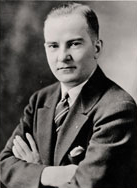
“Never again do we want to see the honor and glory of our nation fade to the extent that her men of arms, with despondent heart and palsied limb, totter from door to door, bowing their souls to the frozen bosom of reluctant charity.”
American Legion Past National Commander Harry Colmery, after helping draft the Servicemen’s Readjustment Act in the winter of 1943-1944
“How the First GI Bill Was Written” is not only an authoritative historical account of The American Legion’s vital role in the creation of the first GI Bill; it is also a riveting drama. The birth of the Servicemen’s Readjustment Act of 1944 was not easy. The story was told in a three-part series published in the January, February and March 1969 issues of The American Legion Magazine. Editor R.B. Pitkin interviewed several key figures and reviewed volumes of official documents to chronicle the ambitious grass-roots effort to craft the bill and consolidate several bills into one. There were 10 key ingredients:
- Educational opportunity
- Vocational on-the-job training
- Readjustment allowances
- Home, farm and business loans
- Review of discharges
- Adequate health care
- Prompt settlement of disability claims
- Mustering-out pay (removed from the bill after it was enacted separately)
- Effective veteran employment services
- Concentration of all veterans functions in the Veterans Administration
The GI Bill Story
Download a PDF of the complete series from the 1969 issues of The American Legion Magazine.
A Tribute to the Author of the American Dream
Click here to learn more about Past National Commander Harry Colmery, the architect of the GI Bill.
"The Road to a Better GI Bill"
The American Legion Magazine's August 2008 issue devoted an entire cover story to the background, lobbying efforts and eventual passage of the Post-9/11 GI Bill. In April of 2008, young veterans showed up in droves on the steps of the U.S. Capitol Building, voicing support for the legislation and expressing concerns about the obstacles the modern servicemember faced in funding an education with the Montgomery GI Bill. Several members of Congress joined them. The outpouring of support fueled a quick passage for the bill.
"The Road to a Better GI Bill" explains the historical basis and the need for a new GI Bill, gives a detailed account of the lobbying efforts, and outlines the bill's passage into law.
By Philip M. Callaghan
August 1, 2008
Here's the problem: We send our young men and women off to war in distant lands, testing their strength, commitment and courage under fire - sometimes for three or more tours of combat duty. Then we bring them home, thank them for their service, turn them out to the civilian world and watch them struggle to succeed.
As troops, they are revered for defending our nation against terror. As veterans, they slip from our sight as they pursue college degrees. The GI Bill of recent years was a far cry from the original, having gradually lost value while the cost of higher education soared. The American Legion worked with Congress for more than three years to deliver a meaningful veterans education benefit, one that truly meet the needs of our 21st century veterans.
